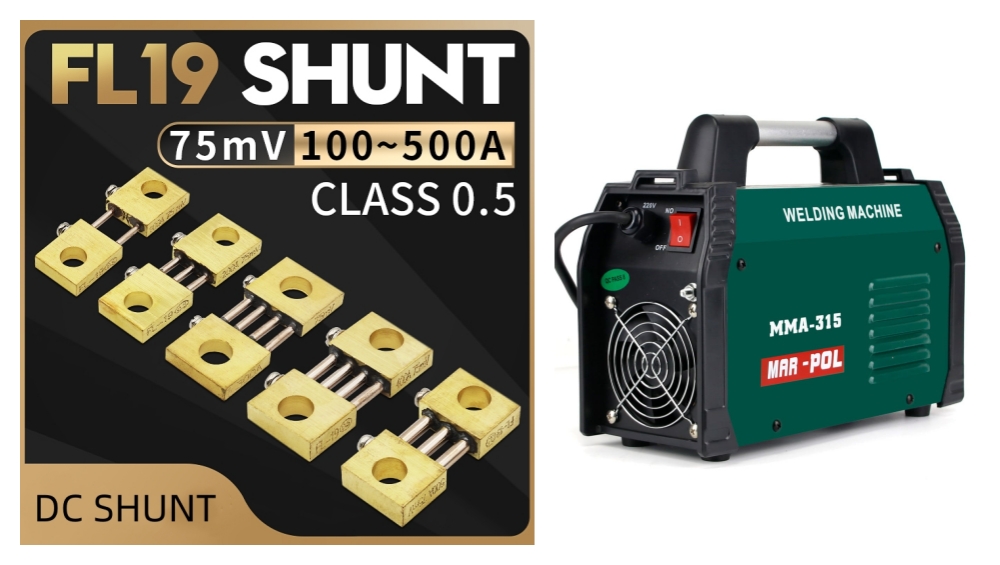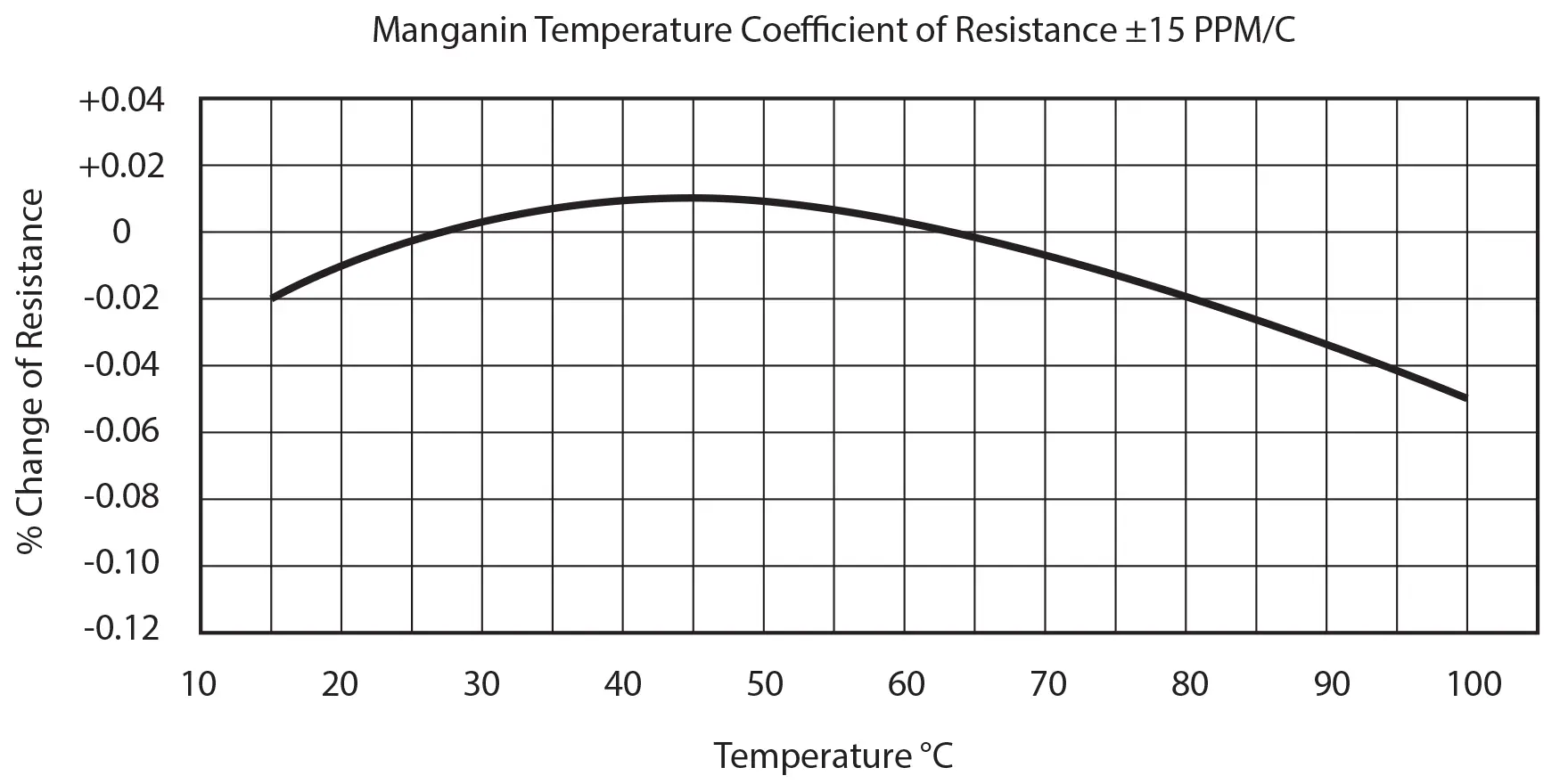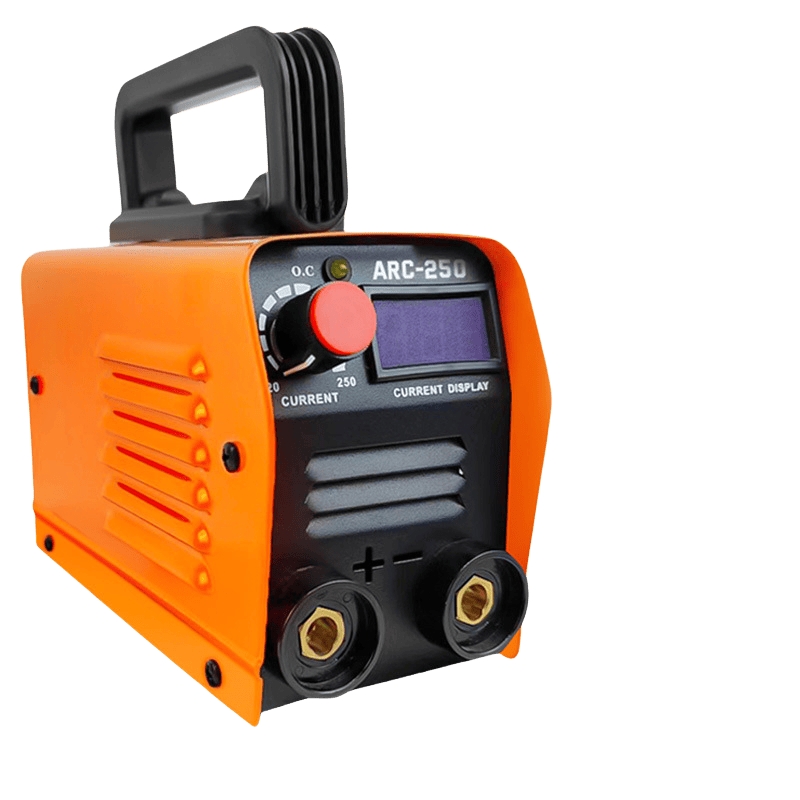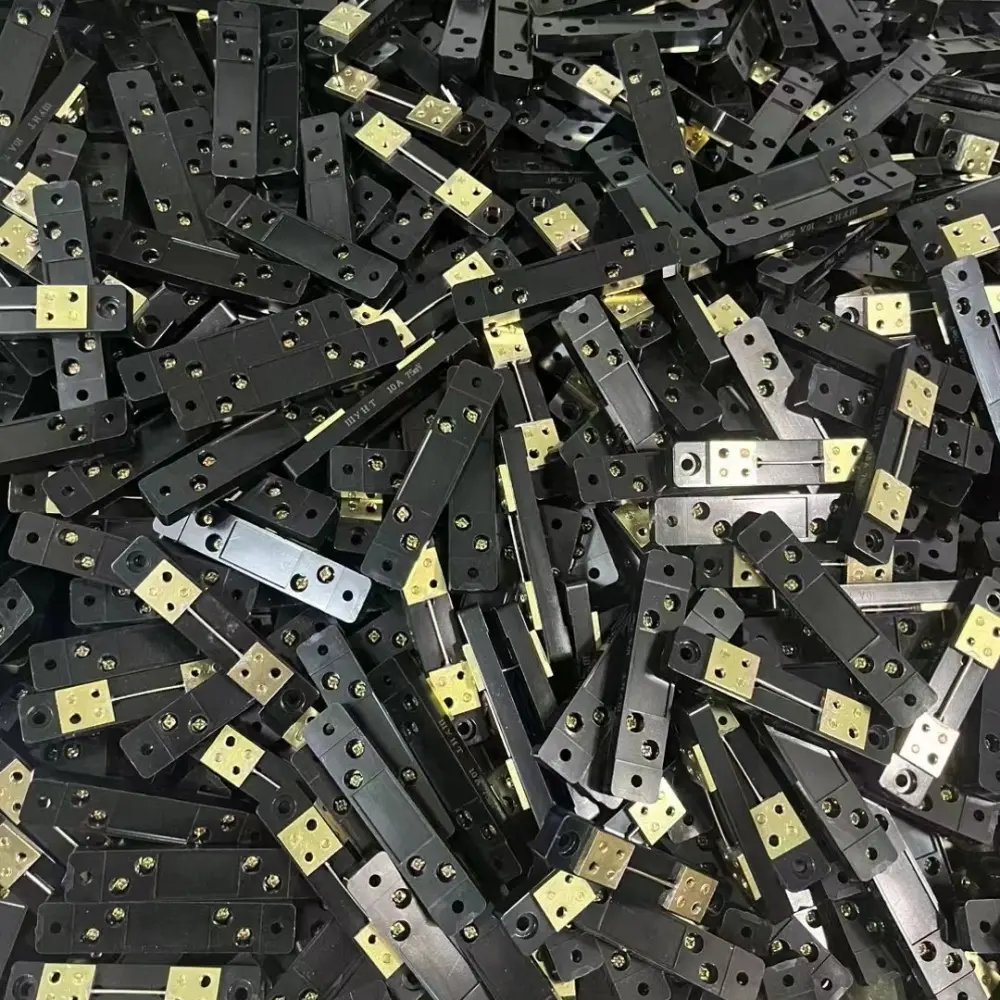In the demanding world of welding manufacturing, reliability isn’t just a desirable feature—it’s a critical necessity. Whether producing automotive safety components, pressure vessels, structural steel, or aerospace applications, weld quality plays a pivotal role in product performance, safety, and longevity. The use of DC shunts has become essential in ensuring welding reliability. These precision tools are key to providing accurate current measurements that are vital for consistent, high-quality welds. This article explores the indispensable role of DC shunts in maintaining welding reliability and enhancing quality control in manufacturing processes.
The Relationship Between Welding Reliability and Current Control
The Current-Quality Connection
The key to welding reliability lies in understanding the direct relationship between welding current and the quality of the weld. But here’s the kicker: the magnitude and stability of welding current directly influence several critical aspects of weld quality. Consider these factors:
- Penetration depth: This is largely determined by the welding current’s magnitude. Insufficient current may fail to penetrate, while excessive current can over-penetrate the material.
- Bead width and profile: These are highly dependent on the stability of the current delivery. Variations in current can cause uneven beads, resulting in an inferior weld.
- Fusion quality: Achieving proper fusion between the base material and the weld metal requires maintaining appropriate current levels tailored to the material and joint type.
- Mechanical properties: The strength and durability of the completed weld are closely tied to the heat input, which is regulated by the welding current.
- Defect formation: Fluctuations in current—either too high or too low—can lead to common defects, such as cracks, porosity, or lack of fusion.
The message here? Maintaining a stable and precise current flow is the foundation of weld quality. This is where DC shunts come in, playing a crucial role in ensuring that the welding machine delivers the right amount of current consistently.

Common Welding Defects Linked to Current Control
Many welding defects can be traced directly to improper current control. Ready for the good part? Understanding the connection between current issues and defects allows manufacturers to preemptively address quality problems before they occur:
- Lack of fusion: Occurs when the current is too low to properly melt the base material, leading to a weak weld.
- Excessive penetration: Caused by too much current, which can burn through the material and create overly deep welds.
- Porosity: Arises when current fluctuations disrupt the shielding gas, leading to contamination of the weld.
- Undercut: Happens when excessive current causes too much material erosion along the edges of the weld, creating a weakened joint.
- Inconsistent bead profile: Indicative of unstable current, resulting in irregular bead shapes and poor structural integrity.
- Cold laps: These occur when current dips below the necessary threshold for a fraction of time, causing insufficient fusion between layers of material.
These defects are more than just aesthetic problems—they lead to rejected parts, costly rework, and, in extreme cases, safety risks. According to industry reports, the cost of rework and repair can amount to 5-15% of total production costs, making it clear why precise current control is a must.
Summary Table: Common Defects Due to Current Control Issues
| Welding Defect | Cause | Effect |
|---|---|---|
| Lack of Fusion | Insufficient current | Weak weld, poor joint integrity |
| Excessive Penetration | Excessive current | Burned material, weak structure |
| Porosity | Current fluctuations | Contaminated welds |
| Undercut | Too high current for travel speed | Weakened joint |
| Inconsistent Bead Profile | Unstable current | Poor structural integrity |
| Cold Laps | Current drops below required level | Poor fusion, weak weld |
DC Shunts as Critical Quality Control Components
But here’s the kicker: DC shunts are the cornerstone of quality control in welding processes. Their precise current measurement capabilities allow manufacturers to implement robust quality control systems, ensuring that every weld meets the desired standards.
The Role in Quality Control Systems
DC shunts play a central role in comprehensive welding quality control by providing accurate, real-time current measurements. These measurements not only help control the welding process but also verify that operations are within specified limits. Here’s how DC shunts fit into the quality control process:
- Primary measurement reference: They serve as the definitive measurement of the actual current flowing through the welding circuit, ensuring that the process remains within prescribed parameters.
- Feedback element: By feeding precise current data to control systems, DC shunts help maintain consistent operation, keeping the welding current within optimal ranges throughout the welding process.
- Verification component: DC shunts provide documentation that confirms the welding process adhered to the correct parameters, which is vital for industries requiring strict compliance and traceability.
- Diagnostic tool: They can help detect issues with the equipment before they affect production. Anomalies in current levels can signal equipment malfunctions or system inefficiencies.
- Calibration reference: DC shunts are also used to calibrate other measurement tools, ensuring the continued accuracy of the system across multiple machines or welding stations.
With DC shunts providing reliable current measurements, manufacturers can transition from reactive inspection processes to proactive defect prevention.
Integration with Other Quality Control Measures
DC shunts don’t operate in isolation—they work hand-in-hand with other quality control tools and techniques. This integration provides a multi-layered approach to welding quality that ensures the highest standards are consistently met:
- Parameter monitoring: By combining current data with other variables like voltage, travel speed, and material type, manufacturers can fine-tune the welding process to ensure the best possible result.
- Visual inspection systems: By correlating real-time current data with the visual inspection of the weld, manufacturers can detect flaws or imperfections that might otherwise go unnoticed.
- Non-destructive testing (NDT): DC shunts contribute valuable data to complement NDT methods, ensuring that any hidden defects or weaknesses in the weld can be identified.
- Statistical process control (SPC): By integrating DC shunt measurements into SPC systems, manufacturers can use real-time data to monitor performance and detect deviations before they result in defects.
- Documentation systems: DC shunts help meet documentation requirements for traceability, especially in industries like aerospace and automotive, where detailed records of every weld are critical.
Through the integration of DC shunts with these systems, manufacturers can minimize defect rates and ensure the consistency of every weld.
Summary Table: Role of DC Shunts in Quality Control Systems
| Quality Control Function | Description | Benefit |
|---|---|---|
| Primary Measurement | Measures actual welding current | Ensures process consistency |
| Feedback Element | Sends data to control systems for real-time adjustments | Maintains current stability |
| Verification | Provides process documentation | Supports traceability and compliance |
| Diagnostic Tool | Detects equipment issues early | Prevents production downtime |
| Calibration Reference | Used to calibrate other measuring instruments | Ensures accuracy across systems |
Preventive Quality Control Strategies
What’s the real story here? By using accurate current data from DC shunts, manufacturers can move from reactive quality control to preventive measures that eliminate defects before they even begin.
Current Data-Based Parameter Optimization
Ready for the good part? Precise current measurements enable manufacturers to optimize their welding parameters, enhancing the entire process and ensuring consistent quality. Here’s how:
- Baseline establishment: By first measuring current delivery accuracy and stability, manufacturers can establish a reliable baseline for optimal performance.
- Parameter mapping: Identifying the optimal current ranges for specific materials and joint types ensures that each welding process is customized for the task at hand.
- Tolerance determination: Defining the acceptable variation limits for current ensures that minor fluctuations don’t lead to defective welds.
- Process window definition: By documenting the combination of parameters that result in acceptable weld quality, manufacturers can create a standardized “process window” that ensures consistency.
- Standard operating procedures (SOPs): By basing SOPs on verified parameters, manufacturers can ensure that operators follow best practices, minimizing defects caused by human error.
With this data-driven approach, welding becomes a science, reducing reliance on operator skill and increasing the predictability and repeatability of each weld.
Process Capability Analysis and Improvement
Process capability analysis—powered by high-precision DC shunts—offers a methodical approach to improving welding processes. Here’s how manufacturers can leverage accurate current measurements to improve their process capability:
- Cp/Cpk analysis: These statistical methods measure the ability of a process to operate within specification limits, allowing manufacturers to quantify and improve process consistency.
- Variation reduction: By identifying sources of current instability, manufacturers can address the root causes of variation, leading to higher-quality results.
- Control chart implementation: Continuous monitoring of process performance using control charts allows manufacturers to spot deviations and address issues before they affect weld quality.
- Trend analysis: Detecting gradual shifts in current data can help identify issues before they become critical, ensuring a proactive approach to quality control.
- Correlation studies: Linking current parameters to final weld quality metrics enables manufacturers to optimize their processes for the best possible outcomes.
One case study saw a manufacturer improve its process capability from a Cpk of 1.2 to 2.1, which represented a dramatic reduction in the probability of defects and a corresponding improvement in customer satisfaction.
Statistical Process Control Implementation
This is where it gets interesting. Implementing statistical process control (SPC) based on current data transforms welding quality management into a continuous improvement process. Here’s the blueprint for effective SPC implementation:
- Define critical parameters: Identify which current-related measurements correlate most strongly with weld quality.
- Establish control limits: Set upper and lower control limits to maintain consistency and prevent defects.
- Implement monitoring: Use real-time data to track welding parameters against control limits, ensuring process stability.
- Train response protocols: Develop response protocols for out-of-control conditions, ensuring quick corrective actions.
- Document results: Maintain comprehensive records of process performance, enabling traceability and accountability.
With SPC in place, manufacturers can continuously improve quality by minimizing process variation and preventing defects.
Summary Table: Current-Based Preventive Quality Control
| Strategy | Description | Benefit |
|---|---|---|
| Parameter Optimization | Systematic mapping of optimal current ranges | Ensures consistent weld quality |
| Process Capability Analysis | Measuring process consistency with Cp/Cpk analysis | Reduces defect rates |
| Control Chart Monitoring | Real-time tracking of process performance | Prevents deviations and defects |
| Trend Analysis | Detecting gradual shifts in current parameters | Enables proactive quality control |
| Correlation Studies | Linking current data with final weld quality | Optimizes processes for best results |
Case Study: Quality Improvement Results
Now let’s dive into a real-world example. What’s the kicker in this case study? A manufacturer of pressure vessel components faced inconsistent weld quality, leading to high rejection rates and occasional field failures. Here’s how they turned things around:
Background and Challenge
The manufacturer was experiencing variations in current values that were up to 20% off from what the equipment displayed, with significant drift (up to 15%) during extended operations. This led to poor weld consistency, defective products, and costly rework.
Solution Implementation
They implemented a quality improvement program centered on precise current measurement using high-accuracy DC shunts:
- Upgraded all welding machines with FL-19 series DC shunts, offering a 0.1% accuracy class.
- Integrated the shunts with a centralized monitoring system that recorded actual current values in real time.
- Introduced statistical process control based on these current measurements to fine-tune the process.
- Developed optimized welding parameters for common joint types.
- Created detailed SOPs based on verified parameters, ensuring consistency.
- Trained operators on the importance of current control and proper monitoring techniques.
Measurable Outcomes
The results were impressive:
- Defect reduction: The overall weld defect rate decreased by 78%.
- Rework reduction: Rework and repair costs were reduced by 82%.
- Consistency improvement: Variation between operators dropped by 65%.
- Documentation enhancement: Complete traceability of welding parameters for all production.
- Customer satisfaction: No field failures occurred in the 18 months following implementation.
Financial Impact
The program delivered significant cost savings:
- Implementation cost: $145,000
- Annual savings from reduced rework: $320,000
- Additional savings from eliminated field failures: $275,000
- Simple payback period: 2.4 months
- Five-year ROI: 1,850%
Beyond the financial benefits, the company also gained increased customer confidence, leading to more orders and a larger market share in high-value applications.
Implementation Path and Challenges
Ready for the good part? Manufacturers looking to implement precise current control must address several key considerations. Here’s a roadmap to success:
System Integration Considerations
Integrating high-precision DC shunts into existing systems requires careful planning:
- Hardware compatibility: Ensure that the signal conditioning components match the output characteristics of the shunts.
- Software integration: Adapt control systems to process and utilize the improved measurement accuracy.
- Data management: Design systems capable of storing and analyzing the increased data flow from the shunts.
- Alarm configuration: Establish proper limits and response protocols to handle out-of-control conditions effectively.
- User interface design: Present data in a clear, actionable format for operators to use.
A phased implementation approach is recommended, starting with pilot installations to demonstrate value before rolling out full-scale deployment.
Personnel Training Requirements
No system will function optimally without proper training. Here’s what needs to be done:
- Operator awareness: Ensure that welders understand the significance of precise current control.
- Engineering capabilities: Develop in-house expertise in parameter optimization.
- Maintenance skills: Train technical staff to handle system maintenance and calibration.
- Quality personnel: Educate quality control teams on using current data for defect prevention.
- Management understanding: Help leadership understand the value of precise measurement.
Proper training will help maximize the utilization of the advanced measurement capabilities provided by DC shunts.
Continuous Improvement Mechanisms
To keep the benefits flowing, it’s crucial to implement continuous improvement processes:
- Regular data review: Analyze current data to identify trends and areas for optimization.
- Parameter refinement: Continuously refine welding parameters based on new data and insights.
- Technology updates: Stay up to date with evolving measurement technologies.
- Knowledge sharing: Distribute best practices across the organization to ensure consistent quality.
- Benchmark comparison: Compare performance against industry standards to stay competitive.
By embedding continuous improvement into the fabric of operations, manufacturers can maintain and even accelerate their competitive advantage.
Conclusion: Quality and Productivity in Balance
The implementation of high-precision DC shunts represents a unique opportunity to enhance both quality and productivity in welding operations. Unlike many other quality control measures, precise current control improves weld quality while reducing waste and rework.
For welding machine manufacturers, incorporating high-quality DC shunts into equipment designs offers a compelling value proposition—machines that provide consistent results, require less operator intervention, and produce fewer defects. This translates directly to customer satisfaction and a competitive edge in a marketplace where reliability is a critical differentiator.
For end-users, selecting welding equipment with precise current measurement capabilities offers substantial returns through reduced quality costs, improved productivity, and enhanced reputation. As quality requirements continue to tighten, this advantage will only become more valuable.
By recognizing the vital role of DC shunts in welding quality control, manufacturers can achieve the reliability modern applications demand and set the foundation for success in even the most challenging markets.
FAQ Section
Q1: How do DC shunts improve welding reliability?
A1: DC shunts provide accurate current measurements, ensuring stable and consistent weld quality, which directly impacts the reliability of welding operations.
Q2: What are the most common welding defects linked to current control?
A2: Defects like lack of fusion, excessive penetration, and porosity are often caused by issues with current control.
Q3: How do DC shunts contribute to quality control systems?
A3: DC shunts serve as the primary reference for current measurement, enabling feedback, verification, diagnostics, and calibration, which ensures consistent welding performance.
Q4: What is the role of statistical process control (SPC) in welding?
A4: SPC uses current data from DC shunts to monitor and improve the welding process, reducing defects and increasing consistency over time.
Q5: How does DC shunt integration improve process capability?
A5: By providing accurate current data, DC shunts help manufacturers improve process capability, reduce variation, and enhance weld quality.





